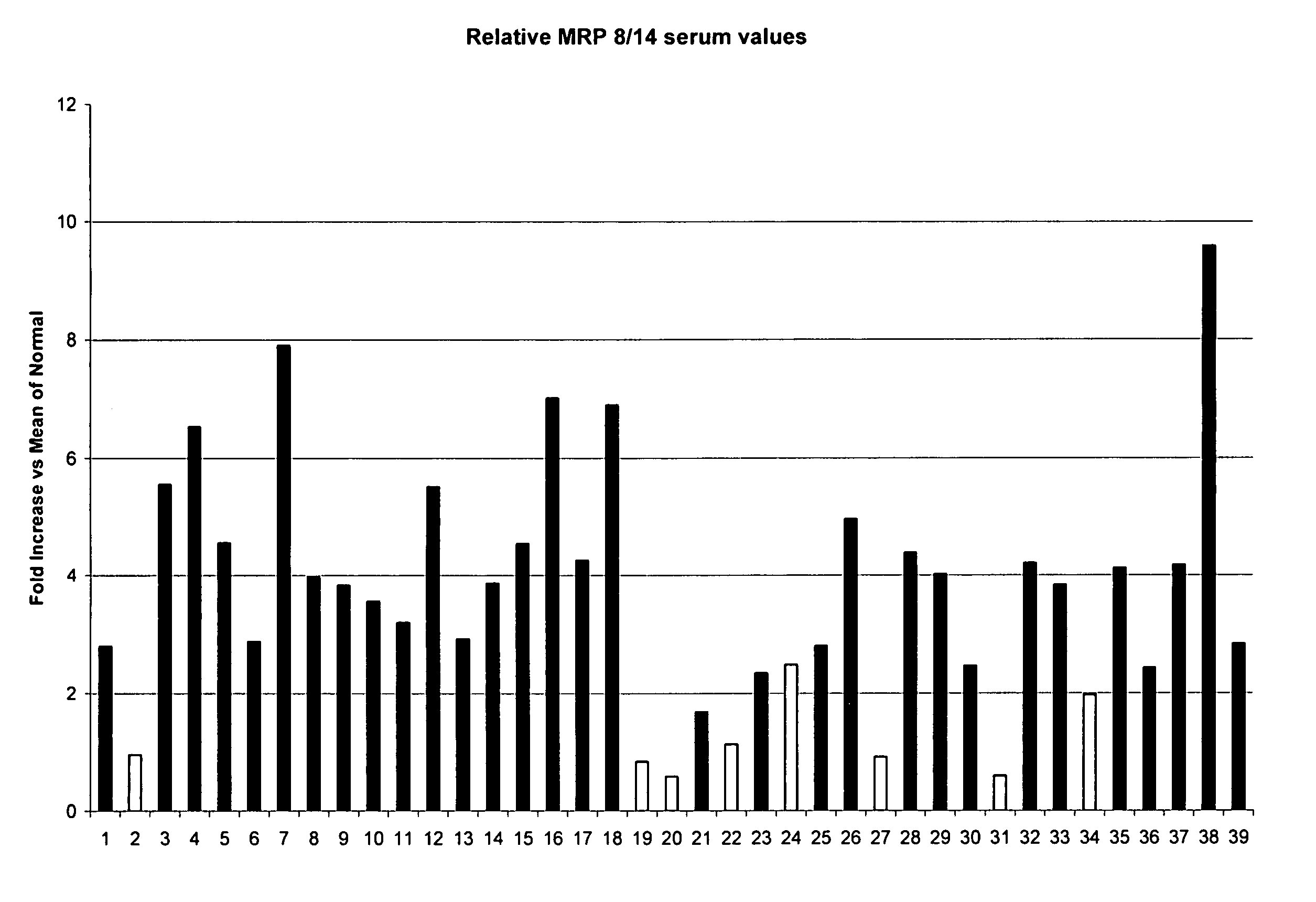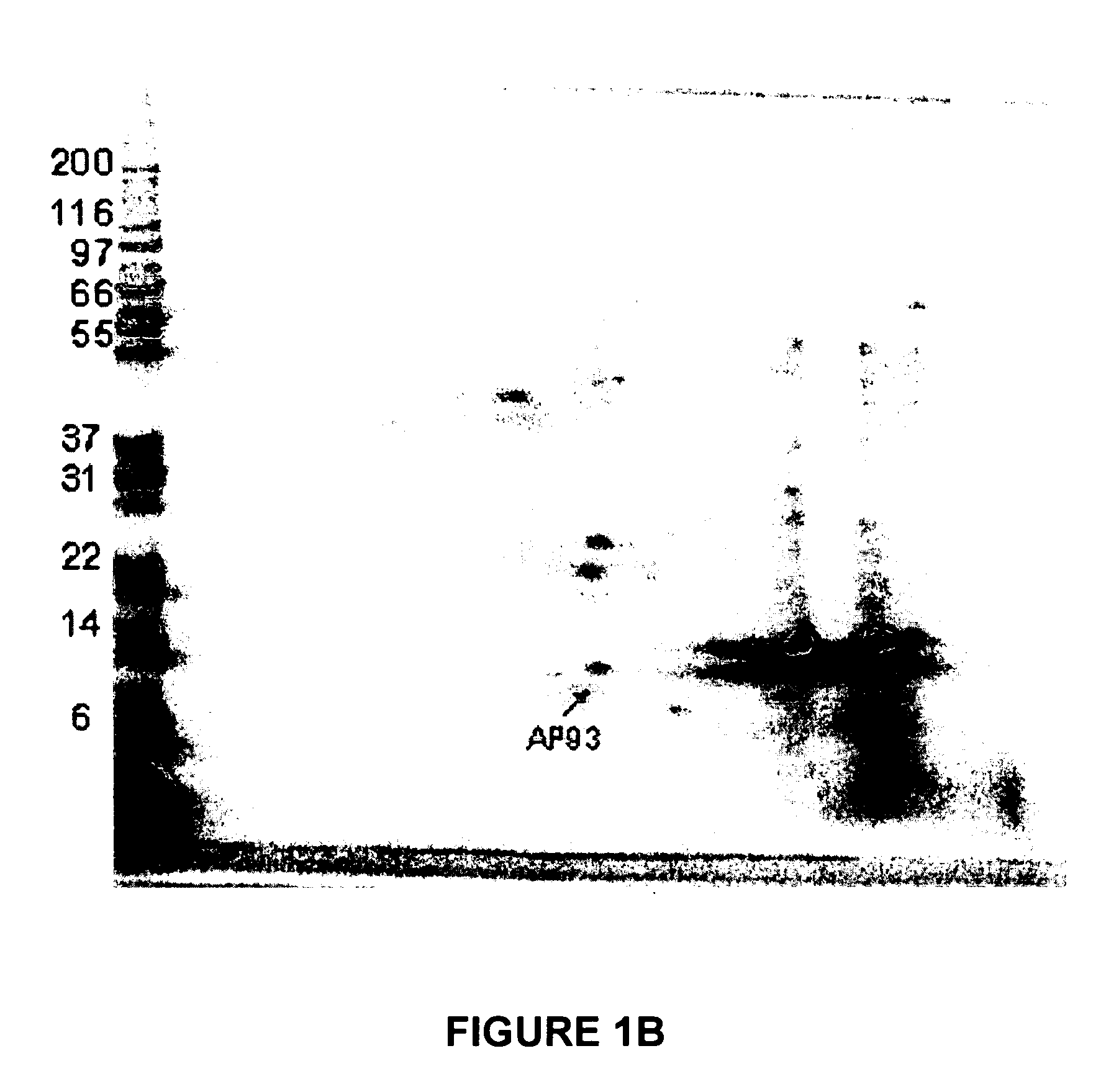Methods and devices for diagnosis of appendicitis
a technology for appendicitis and diagnosis, applied in biochemistry apparatus and processes, instruments, enzymology, etc., can solve problems such as difficult diagnosis of appendicitis, and achieve the effect of improving the correct diagnosis and diagnosing appendicitis
- Summary
- Abstract
- Description
- Claims
- Application Information
AI Technical Summary
Benefits of technology
Problems solved by technology
Method used
Image
Examples
example 1
MRP-8 / 14
[0061] The objective of this study was to identify a tissue-specific marker that could contribute to the decision matrix for diagnosing early acute appendicitis. A proteomic screen was used to identify a protein in the appendix specifically upregulated in acute appendicitis. MRP-8 / 14 was identified as present both in the diseased appendix and in serum of acute appendicitis patients.
[0062] Materials and Methods
[0063] Specimen and Serum Collection. All patients enrolled in this study were treated according to accepted standards of care as defined by their treating physicians. Prior to being approached for inclusion in our study, all patients were evaluated by a surgeon and diagnosed by that surgeon as having appendicitis. The treating surgeon's plans for these appendicitis patients included an immediate appendectomy. The specifics of all treatments such as use of antibiotics, operative technique (either open or laparoscopic) were determined by the individual surgeon.
[0064]...
example 2
[0081] Using a proteomic screen of serum and appendix tissue, we determined that haptoglobin is upregulated in patients with acute appendicitis. The alpha subunit of haptoglobin is an especially useful marker in screening for the disease.
[0082] Materials and Methods
[0083] Specimen and serum collection, appendicitis tissue processing, 2D gel analysis of extracted tissue samples, and western blot analysis of extracted appendix tissue samples were as described above in Example 1, except that for the western blot, affinity-purified anti-human haptoglobin (Rockland, 600401-272) was used at a 1:5000 dilution in 0.5× uniblock for the primary antibody; and the secondary antibody was peroxidase anti-rabbit IgG (h+1), affinity purified (vector, pi-1000) in a 1:5000 dilution in uniblock.
[0084] Results
[0085] Identification of proteins present in appendix tissue from appendicitis patients. A differential proteomic analysis was performed on depleted serum samples with the goal of ...
example 3
Method of Identifying Molecules Using Fluid Samples
[0089] In variations of this example, fluid samples can include whole blood, serum, or plasma. The samples are whole blood collected from human patients immediately prior to an appendectomy. The specimens are placed on ice and transported to the lab. The blood is then processed by centrifugation at 3000 rpm for 15 minutes. Plasma is then separated by pouring into another container
[0090] Upon performing an appendectomy, a patient is classified as having appendicitis (AP) or non-appendicitis (NAP). The classification is based on clinical evaluation, pathology, or both as known in the art. For cases of appendicitis, the clinical condition is also characterized as either perforated or non-perforated.
[0091] The samples from AP patients are optionally pooled and divided into aliquots. Optionally, a pooled aliquot is treated so as to remove selected components such as antibodies and serum albumin. Similarly, the samples from NAP patient...
PUM
| Property | Measurement | Unit |
|---|---|---|
| volume | aaaaa | aaaaa |
| pH | aaaaa | aaaaa |
| molecular weight | aaaaa | aaaaa |
Abstract
Description
Claims
Application Information
 Login to View More
Login to View More - R&D
- Intellectual Property
- Life Sciences
- Materials
- Tech Scout
- Unparalleled Data Quality
- Higher Quality Content
- 60% Fewer Hallucinations
Browse by: Latest US Patents, China's latest patents, Technical Efficacy Thesaurus, Application Domain, Technology Topic, Popular Technical Reports.
© 2025 PatSnap. All rights reserved.Legal|Privacy policy|Modern Slavery Act Transparency Statement|Sitemap|About US| Contact US: help@patsnap.com



